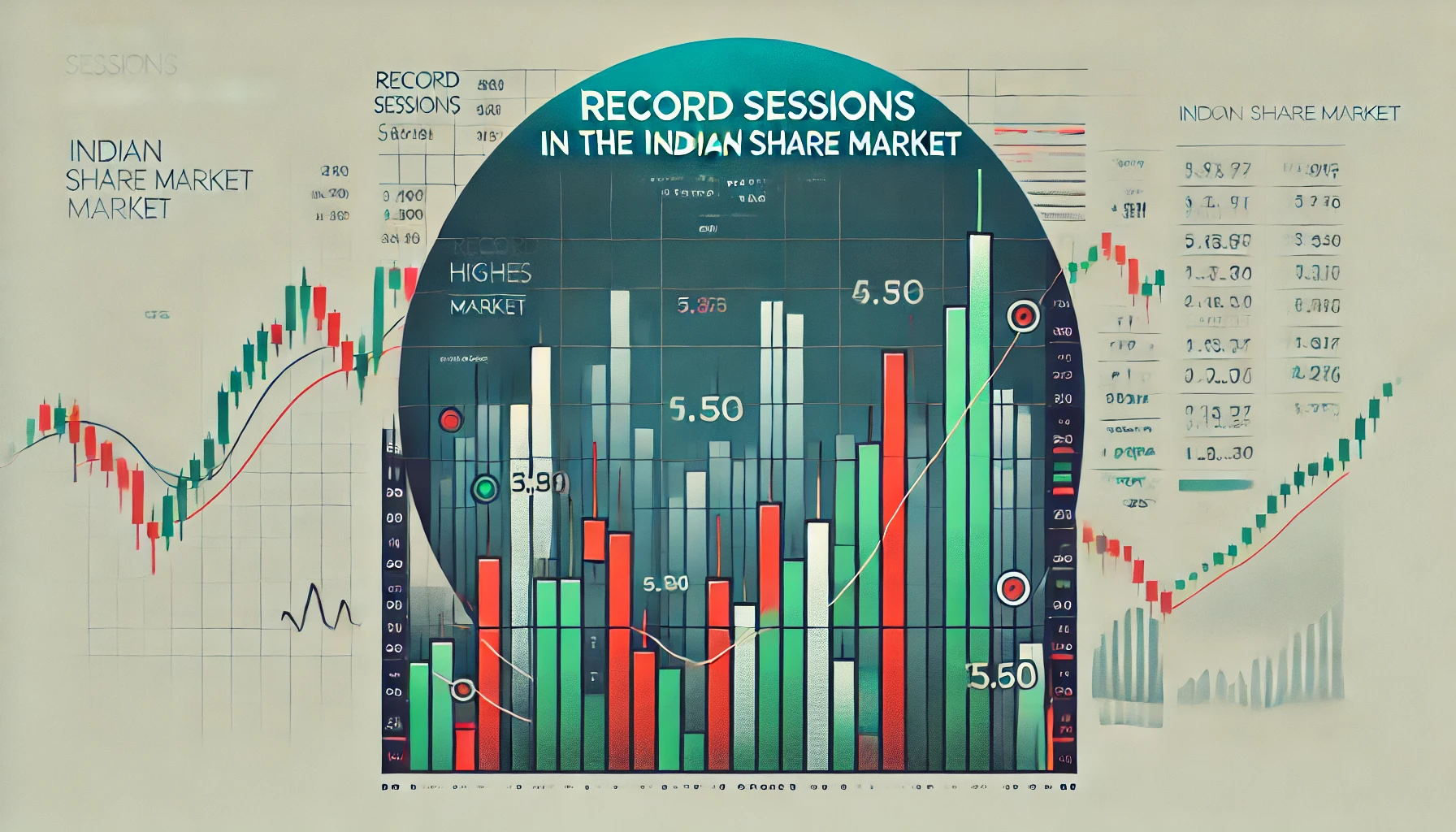The Indian stock market offers a variety of opportunities for traders who understand how to interpret technical analysis tools. One such tool is the Standard Deviation Channel, which allows traders to identify trends, volatility, and potential market reversals. In this blog, we will explore the concept of Standard Deviation Channels, how they work, and how traders can use them effectively in the Indian share market.
What Are Standard Deviation Channels?
Standard Deviation Channels are a technical analysis tool that helps identify the range in which a stock’s price moves. They consist of three parallel lines:
- Center Line (Moving Average): This is typically a simple or exponential moving average.
- Upper Channel Line: This line is plotted at a set number of standard deviations above the moving average.
- Lower Channel Line: This line is plotted at the same number of standard deviations below the moving average.
The concept behind Standard Deviation Channels is that price movements tend to revert to the mean, and when the price deviates significantly from the mean, it might signal an overbought or oversold condition.
How Standard Deviation Channels Work
Standard Deviation Channels help traders measure volatility and assess whether a stock is trading within its typical range. The upper and lower channels act as dynamic support and resistance levels, helping traders decide when to buy or sell based on the stock’s current position relative to the channels.
- If the price touches the upper channel, it suggests the stock is potentially overbought, and a downward correction may be imminent.
- If the price touches the lower channel, it indicates that the stock might be oversold, and a potential upward move could follow.
Practical Application of Standard Deviation Channels in the Indian Share Market
In the Indian market, Standard Deviation Channels can be applied to major indices such as Nifty 50 and Sensex, as well as individual stocks. By adjusting the standard deviation values, traders can fine-tune the channels to account for the volatility of different stocks.
Table: Nifty 50 and Standard Deviation Channels – Historical Data
| Date | Nifty 50 Value | 50-Day MA | Upper Channel (2 SD) | Lower Channel (2 SD) | Signal |
|---|---|---|---|---|---|
| 01-Jan-2022 | 17250 | 17000 | 17500 | 16500 | Neutral |
| 15-Feb-2022 | 18000 | 17400 | 17900 | 16900 | Breakout Up |
| 01-Apr-2022 | 16700 | 17050 | 17750 | 16350 | Reversal Down |
| 01-Jun-2022 | 16200 | 16500 | 17100 | 15900 | Neutral |
| 15-Jul-2022 | 17000 | 16800 | 17600 | 16200 | Approaching Upper Band |
This table shows how Standard Deviation Channels could have been used to analyze the Nifty 50 at different points. Breakouts, reversals, and neutral zones provided valuable insights for traders.
Historical Data Analysis: Sensex and Standard Deviation Channels
Below is a similar analysis for the Sensex index, using a 50-day moving average and channels plotted at 2 standard deviations.
Table: Sensex and Standard Deviation Channels – Historical Data
| Date | Sensex Value | 50-Day MA | Upper Channel (2 SD) | Lower Channel (2 SD) | Market Condition |
|---|---|---|---|---|---|
| 01-Jan-2023 | 58,000 | 56,500 | 59,500 | 53,500 | Neutral |
| 01-Mar-2023 | 60,200 | 57,800 | 61,400 | 54,200 | Breakout Up |
| 01-Jun-2023 | 59,000 | 57,000 | 60,800 | 53,200 | Approaching Resistance |
| 15-Jul-2023 | 56,500 | 58,200 | 61,800 | 54,600 | Reversal Down |
As with the Nifty 50, the Sensex experienced breakouts and reversals that could be identified using Standard Deviation Channels.
Strategies for Trading with Standard Deviation Channels
1. Channel Breakout Strategy
When a stock price breaks out of the upper or lower channel, it indicates a significant change in market momentum. Traders can capitalize on these breakouts by entering trades in the direction of the breakout.
2. Mean Reversion Strategy
Standard Deviation Channels are effective for mean reversion strategies. When the stock price reaches the upper channel, it may revert back toward the moving average. Similarly, when it touches the lower channel, a reversal toward the moving average can be expected.
3. Combining with Other Indicators
Standard Deviation Channels work best when combined with other technical indicators such as the RSI or MACD. For example, if the price touches the upper channel and the RSI shows overbought conditions, it may provide a stronger sell signal.
Chart: Nifty 50 and Standard Deviation Channels (2018–2023)
By reviewing the historical data of the Nifty 50 from 2018 to 2023, we can see how Standard Deviation Channels helped in identifying potential trend reversals, overbought, and oversold conditions.
Table: Nifty 50 Historical Standard Deviation Channel Analysis (2018–2023)
| Date | Nifty 50 Value | 50-Day MA | Upper Channel (2 SD) | Lower Channel (2 SD) | Price Movement |
|---|---|---|---|---|---|
| 01-Jan-2018 | 11,000 | 10,800 | 11,400 | 10,200 | Neutral |
| 01-Jun-2018 | 11,500 | 11,000 | 12,200 | 10,300 | Reversal Down |
| 01-Dec-2018 | 12,000 | 11,800 | 12,600 | 11,000 | Breakout Up |
| 01-Mar-2020 | 10,000 | 9,800 | 10,600 | 9,000 | COVID-19 Crash |
| 01-Jul-2021 | 15,000 | 14,800 | 15,600 | 14,000 | Breakout Up |
This table outlines critical points where Standard Deviation Channels provided actionable signals for traders in the Indian share market.
Best Practices for Using Standard Deviation Channels
1. Choosing the Right Standard Deviation
The standard deviation setting can be adjusted based on the volatility of the stock. For highly volatile stocks, a setting of 2.5 to 3 standard deviations may be more appropriate, while more stable stocks may work well with 2 standard deviations.
2. Combine with Trend Analysis
While Standard Deviation Channels provide great insights into volatility and market conditions, they should be used in conjunction with trend analysis to identify the broader market direction.
3. Avoiding False Signals
In a sideways market, Standard Deviation Channels may generate false signals. During these times, it’s essential to combine the channels with other indicators like moving averages or Bollinger Bands to confirm the signal.
Limitations of Standard Deviation Channels
As useful as they are, Standard Deviation Channels have their limitations. They may generate false signals in choppy, sideways markets. Additionally, they are best used in trending markets and should be complemented with other technical analysis tools to avoid whipsaws.
Conclusion: Utilizing Standard Deviation Channels for Trading Success
Standard Deviation Channels are an excellent tool for identifying volatility, market trends, and potential reversal points in the Indian share market. Whether trading on Nifty 50, Sensex, or individual stocks, Standard Deviation Channels can help traders make better-informed decisions. By combining them with other indicators and adjusting the standard deviation based on market conditions, traders can enhance their strategies and increase profitability.
Whether you’re a seasoned trader or just starting out, incorporating Standard Deviation Channels into your technical analysis toolkit can give you a significant edge in the dynamic Indian share market.

What is the TRIN stock market indicator?
The TRIN (Trading Index), also referred to as the Arms Index, is a technical analysis …

Record Sessions
The Indian share market is a dynamic and volatile space where major highs and lows …

3 Line Strike
Candlestick patterns are a vital tool for traders in the stock market, offering insights into …

3 White Soldiers and 3 Black Crows
Candlestick patterns are a key element of technical analysis in stock trading, offering clear signals …

Gapping Doji
Candlestick patterns are a critical part of technical analysis in the stock market, providing traders …

3 Windows
Candlestick patterns are a vital part of technical analysis, offering traders and investors insights into …

2 Gapping Candles
In the fast-paced world of the Indian stock market, technical analysis plays a crucial role …

3 Inside Down and Up
Candlestick patterns are powerful tools in the world of technical analysis, offering traders insight into …

Bullish and Bearish Belt Hold
Technical analysis is an essential part of trading in the Indian share market. Candlestick patterns, …

Piercing and Dark Cloud Cover
In the ever-evolving Indian stock market, candlestick patterns are crucial for traders aiming to predict …

Double Doji
Candlestick patterns have long been a favored tool for technical traders to forecast market movements. …

Rising and Falling Windows
In the world of technical analysis, candlestick patterns are vital tools for traders to anticipate …

Tweezer Top and Bottom
In the fast-paced world of the Indian share market, traders use technical analysis tools to …

Morning Star and Evening Star
In the Indian share market, technical analysis is a valuable tool for traders aiming to …

Hammer and Hanging Man
The Indian stock market offers a wealth of opportunities for traders who understand technical analysis. …

Shooting Star and Inverted Hammer
The Indian stock market, with its dynamic nature, presents various opportunities for traders and investors. …

Last Engulfing
The Indian share market is filled with patterns that can help traders make informed decisions. …

Harami
In the world of stock market analysis, candlestick patterns offer valuable insights into price movements. …

Engulfing
The Indian share market is known for its volatility, and traders often rely on technical …

Marubozu
Candlestick patterns are powerful tools used by traders in the Indian share market to analyze …

Spinning Top
The Indian share market, like any other, experiences constant fluctuations due to a multitude of …

Doji
The Indian share market is dynamic, with investors using various tools to gauge stock performance. …

Double Top
In the world of technical analysis, chart patterns are valuable tools that help traders spot …

Tweezer
In the Indian share market, where volatility and price fluctuations are part of daily trading, …

Harami
In the world of technical analysis, candlestick patterns are powerful tools that help traders make …

Heiken-Ashi
Navigating the Indian share market can be challenging due to the inherent volatility and market …

Ichimoku
In the world of technical analysis, few indicators offer the comprehensive insights that the Ichimoku …

Value Charts
In the ever-changing landscape of the Indian share market, traders and investors need tools that …

Money Flow Index
In the Indian share market, identifying trends, understanding momentum, and assessing volume are critical components …

Aroon
In the fast-paced world of the Indian share market, identifying market trends and spotting reversals …

Gator Indicator
In the Indian share market, success is largely dependent on identifying the right trends and …



















